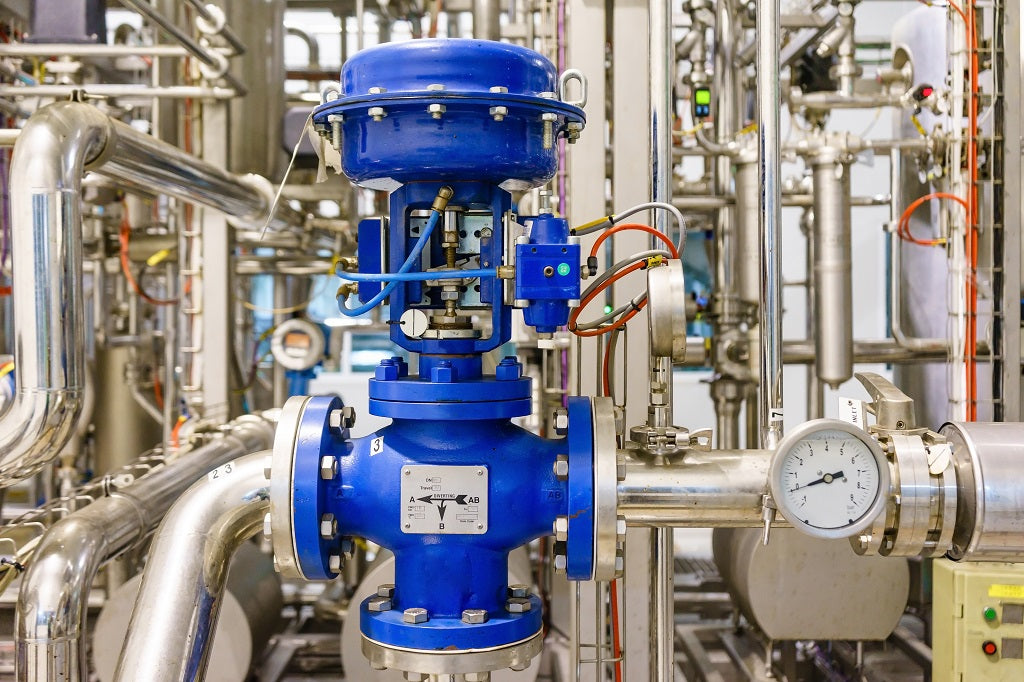Essential Elements to Think About When Picking Control Valves
Essential Elements to Think About When Picking Control Valves
Blog Article

Maximize Power Financial Savings and Comfort With Advanced Structure Automation Controls
In the realm of contemporary style and facility management, the integration of innovative structure automation manages stands as an essential improvement. By utilizing the power of automation, buildings can adapt, react, and progress in means that were as soon as unbelievable.
Power Effectiveness Benefits
Power efficiency advantages can dramatically decrease energy intake and operational costs in structures. By applying energy-efficient methods and innovations, structure proprietors and operators can achieve considerable financial savings while additionally adding to ecological sustainability. One of the main advantages of enhancing power efficiency in structures is the decrease of utility expenses. Energy-efficient systems, such as sophisticated structure automation controls, can optimize making use of sources like heating, cooling, and illumination, leading to reduced energy expenditures in time.
Moreover, boosted power effectiveness can lengthen the life expectancy of structure devices and systems. By operating a lot more effectively, cooling and heating systems, lighting fixtures, and other building parts experience much less deterioration, resulting in minimized maintenance and substitute expenses. Additionally, energy-efficient buildings typically command higher home worths and rental rates, giving long-term financial benefits to proprietors.
Furthermore, power performance can enhance occupant convenience and performance. Properly regulated interior settings with optimal lights and thermal problems produce an even more enjoyable and helpful work space, leading to enhanced staff member contentment and efficiency. Generally, the power performance advantages linked with innovative building automation controls are complex, incorporating expense financial savings, ecological stewardship, and resident well-being.
Enhanced Convenience Control
Enhancing convenience control in structure environments requires an innovative combination of sophisticated automation systems for optimum occupant health. By making use of innovative structure automation controls, facilities can tailor the interior atmosphere to fulfill the details needs and preferences of owners. control valves.
By including these sophisticated controls, structures can not just enhance convenience but likewise improve energy effectiveness by maximizing system operations based on real occupancy and use patterns. Ultimately, prioritizing owner comfort with sophisticated automation systems leads to a much more pleasurable and much healthier indoor environment.
Functional Efficiency Improvements

Moreover, the implementation of real-time tracking and analytics tools enables building operators to recognize energy inefficiencies and operational abnormalities immediately. By continuously keeping an eye on power use patterns and system efficiency metrics, adjustments can be made in real-time to enhance energy usage and make sure peak operational efficiency. control valves. Additionally, link incorporating demand response methods right into structure automation controls can even more improve operational Source performance by dynamically readjusting power use based upon grid conditions and pricing signals
Indoor Climate Optimization
Reliable indoor climate optimization is a basic aspect of building automation controls, making certain residents' comfort and well-being while taking full advantage of power cost savings. By making use of sophisticated sensing units and controls, developing automation systems can continuously adjust and keep track of temperature level, moisture levels, air top quality, and air flow to develop an optimal interior atmosphere. Maintaining comfortable and constant conditions not only improves resident contentment yet likewise increases productivity and total wellness.
Interior climate optimization likewise plays a vital function in energy effectiveness. By fine-tuning ventilation, home heating, and air conditioning systems based upon real-time data and tenancy patterns, developing automation controls can significantly reduce power consumption - control valves. For circumstances, executing strategies such as demand-controlled ventilation and thermal zoning can aid reduce power waste while ensuring that each area of the building receives the necessary conditioning.

Sustainable Environment Creation
Structure automation controls not just optimize interior environment problems for energy efficiency and resident convenience but likewise lay the foundation for creating a lasting setting via critical management of resources and systems. By incorporating advanced structure automation technologies, such as sensing units, actuators, and intelligent software application, centers can adjust and keep track of power usage in real-time to lessen waste and decrease their carbon impact. These systems allow predictive maintenance, recognizing possible problems prior to they intensify and enhancing tools performance to boost long life and effectiveness.
Furthermore, lasting environment development extends past energy administration to encompass water preservation, waste reduction, and indoor check it out air quality enhancement. Structure automation controls can control water use, discover leakages, and ensure appropriate waste disposal practices, contributing to total sustainability efforts. In addition, by managing and checking ventilation and purification systems, these technologies enhance owner health and wellness and productivity while lowering energy consumption connected with cooling and heating operations.
Verdict
Finally, progressed building automation controls deal substantial advantages in regards to power financial savings, comfort control, functional effectiveness, interior climate optimization, and developing a lasting environment. By implementing these controls, buildings can attain optimum efficiency while minimizing energy usage and enhancing passenger convenience. It appears that the use of sophisticated automation technology is crucial in enhancing structure performance and creating an extra lasting future.
Energy effectiveness advantages can dramatically reduce energy intake and functional expenses in buildings. In general, the energy efficiency benefits linked with innovative structure automation controls are complex, including cost savings, environmental stewardship, and passenger wellness.
In addition, integrating need reaction strategies into building automation controls can additionally enhance operational effectiveness by dynamically changing energy use based on grid conditions and prices signals.
Structure automation manages not just enhance indoor climate conditions for power efficiency and owner comfort yet also lay the foundation for producing a sustainable atmosphere via tactical management of sources and systems.In final thought, progressed structure automation controls offer substantial benefits in terms of energy financial savings, comfort control, operational performance, indoor environment optimization, and developing a sustainable environment.
Report this page